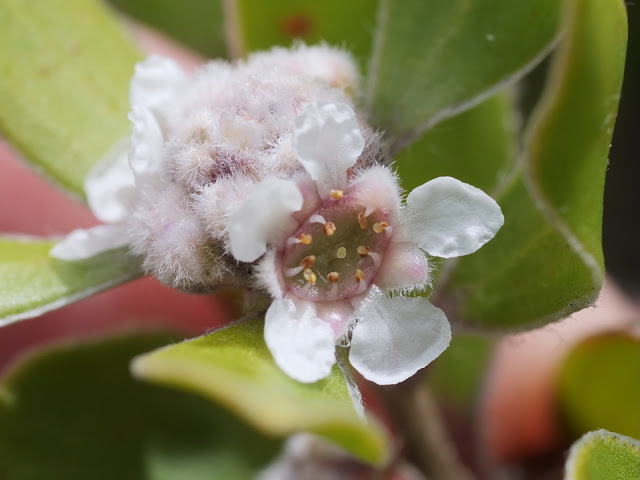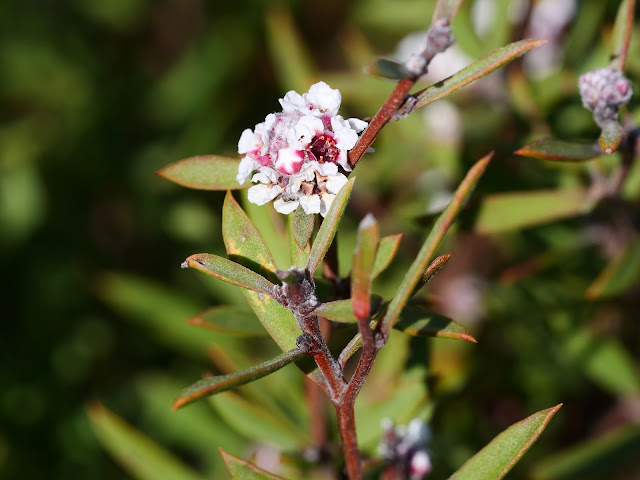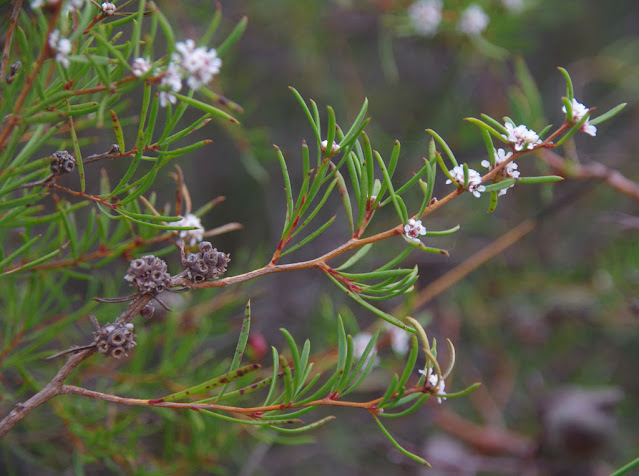Taxandria floribunda
Floribunda from the Latin - flowering profusely.
Distinguished from all other Taxandrai species by the persistent involucral bracts which surround the flower clusters and also surround the fruits and the continually growing flowering shoots.
Flowers recorded mostly October but extending to December. Fruits persist for several years. The flowering shoots continue to grow after fruiting resulting in branches having several successive years’ fruits still surrounded by the persistent bracts.
Occurs within the Stirling Range National Park and near Cranbrook. Grows in heath or mallee-heath on lower and upper slopes of mountain peaks, on sand or sandy clay over quartzite or on stony ground, occasionally on peaty sand associated with swamps or winter-wet depressions. Also occurs in the Karridale Forest area in the Augusta Margaret River LGA and possibly other areas.
A shrub to 2 m tall. The leaves are single, sometimes crowded but not clustered except around flower heads, with a stalk up to 2 mm long; blade obovate or obovate-elliptic, sometimes narrowly so, often undulate or twisted and often recurved towards the apex, typically 5–15 mm long and 1.5–4.5 mm wide, with 1 or 3 longitudinal veins, hairless except when young, tapered to the base, margin usually minutely and irregularly indented, the tip pointed and mucronate (the vein terminates in an exposed point).
The flowers are in clusters either axillary or on short shoots. The clusters may only consist of a few flowers and are surrounded by bracts. The numerous outer bracts are hairless but the inner bracts and bracteoles are somewhat hairy. The sepals are triangular and covered with silky hairs. Petals white. Stamens 10, one opposite each sepal and petal, the stamens by the petals are much longer, and the filaments thicker, than those by the sepals and the filaments are fused to the petals.
Fruits in a small cluster surrounded by the persistent bracts. Each capsule cylindric, 2–3 mm long, 2–2.5 mm wide, hairless or silky hairy.
All photographs (c) Keith Morris, some rights reserved (CC BY-NC) unless otherwise indicated.











Comments
Post a Comment